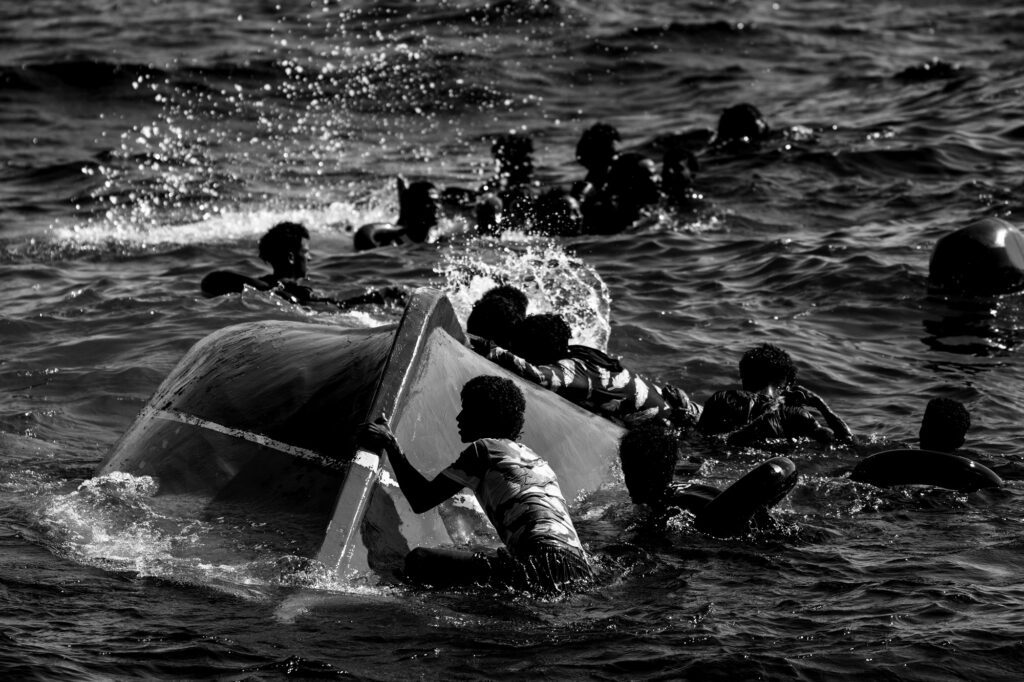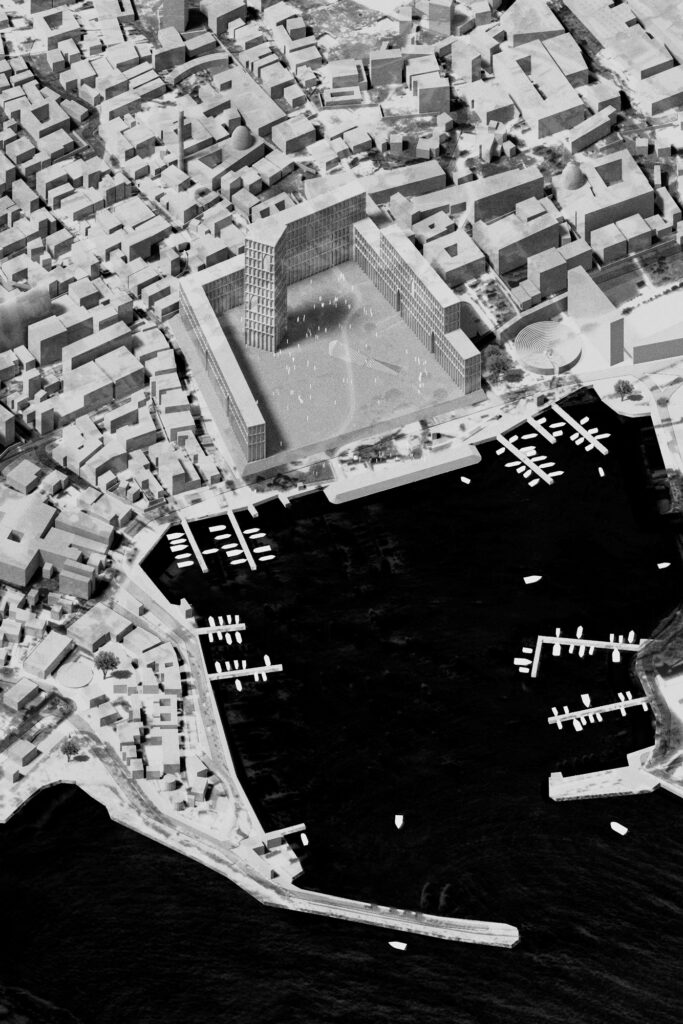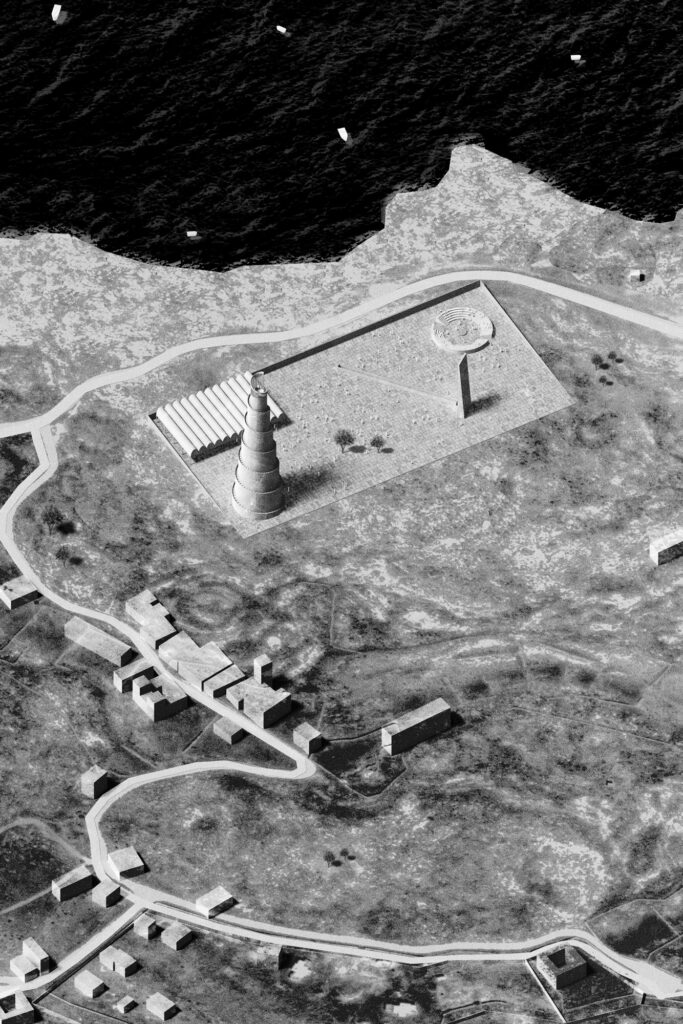“LAMPEDUSA 2050” FICTIONAL ARTICLE
PUBLISHED ON DESIRED LANDSCAPES #2 · WRITTEN BY VINCENZO ANGILERI · VISUALS BY MATT KENNEDY AND ADRIÀ CAÑAMERAS · 2020
Written by VINCENZO ANGILERI
Visualizations by MATT KENNEDY
Photography by ADRIÀ CAÑAMERAS
Published on DESIDERED LANDSCAPES Nº3
Athens, Greece (2020)
“LAMPEDUSA 2050” FICTIONAL ARTICLE
PUBLISHED ON DESIRED LANDSCAPES #2 · WRITTEN BY VINCENZO ANGILERI · VISUALS BY MATT KENNEDY AND ADRIÀ CAÑAMERAS · 2020
'THE ISLAND BETWEEN TWO WORLDS' LAMPEDUSA 2050
Our ferry left a few hours ago from Porto Empedocle, a town of writers and mathematicians in the Southernmost coast of Sicily. We are heading to Lampedusa, an island in the middle of the Mediterranean, the most symbolic gateway between Africa and Europe.
Our ferry is crowded. A group of students from the University of Palermo discussing what they are going to have for dinner. Behind them, some early tourists who decided to catch the shy beginning of summer. A noisy kid has been running past my seat for the last hours, while her mother is nervelessly reading on an old Kindle. There we are, Lampedusa, the not-quite eight square miles of Italian territory in the Mediterranean that used to be known in the world over not as a celebration of coexistence, but for tragedy. For decades, its sparkling waters and postcard- pretty beaches have provided a jarring backdrop for migrant boat landings; the island is conveniently closer to Africa than Europe – around 70 miles from the Tunisian coast and further south than Malta. Until a summer of 30 years ago, on July 2020, when everything changed.
SUMMERS OF PASSION
Yes, summer. The arrival of the good season used to have a different meaning, here. In June is when you started seeing the boats of migrants trying to reach the shores. And, sometimes, many times, failing at it.
It was the Summer of 2018 when I first visited Lampedusa. I was covering the umpteenth shipwreck: it was a day like this, the breeze was soft, the air was warm, the sea dead-tranquil. That day, at least 13 women, some of them pregnant, drowned when a boat crowded with people capsized in the Mediterranean moments before they were due to be rescued. That wasn’t an exception. In the previous two decades, 400,000 migrants had already arrived by way of the Mediterranean sea. And many more had lost their lives in the sea. Then, in 2015, the global refugee crisis raged on. With a population of only 6,000 and an economy that runs on fishing and tourism, the island turned initially into chaos. While refugees from Syria, Libya, Eritrea, the Gambia, the Maghreb, Sudan or Tunisia, arrived on the Lampedusian coasts, Europe saw the rise of nationalisms. In those years, the last far-right parties started to bloom in any major country in Europe. Now we know that the great resurgence of nationalism was actually due to a twilight —the demise or crisis of the nation-state as a political form— and the refugee crisis wasn’t an emergency but a new era of global mobility. But at the beginning of the 2020s, the refugee crisis was perceived as a War. Those were years of confusion and political mistakes, of ‘closed ports’ and scaremongering, fear and racism. In this postmodern and silent war, an estimated 6’700 people were swallowed by the sea, between 2015 and 2020.
But one day, this all ended. At 2AM on July 9th, three decades ago, the last overcrowded fishing boat drifted less than half a mile off the Italian island of Lampedusa. Those 421 people packed on board were the last illegal immigrants of the island: a week after, a delegation of politicians from the EU and AU, —together with a representation of The Middle East Peace League and a local representation of citizens— declared Lampedusa “a Free City”, in the framework of the Sea Peace Act, the 2020 historical deal in front of the eyes of the whole world.
Yes, summer. The arrival of the good season used to have a different meaning, here. In June is when you started seeing the boats of migrants trying to reach the shores. And, sometimes, many times, failing at it.
It was the Summer of 2018 when I first visited Lampedusa. I was covering the umpteenth shipwreck: it was a day like this, the breeze was soft, the air was warm, the sea dead-tranquil. That day, at least 13 women, some of them pregnant, drowned when a boat crowded with people capsized in the Mediterranean moments before they were due to be rescued. That wasn’t an exception. In the previous two decades, 400,000 migrants had already arrived by way of the Mediterranean sea. And many more had lost their lives in the sea. Then, in 2015, the global refugee crisis raged on. With a population of only 6,000 and an economy that runs on fishing and tourism, the island turned initially into chaos. While refugees from Syria, Libya, Eritrea, the Gambia, the Maghreb, Sudan or Tunisia, arrived on the Lampedusian coasts, Europe saw the rise of nationalisms. In those years, the last far-right parties started to bloom in any major country in Europe. Now we know that the great resurgence of nationalism was actually due to a twilight —the demise or crisis of the nation-state as a political form— and the refugee crisis wasn’t an emergency but a new era of global mobility. But at the beginning of the 2020s, the refugee crisis was perceived as a War. Those were years of confusion and political mistakes, of ‘closed ports’ and scaremongering, fear and racism. In this postmodern and silent war, an estimated 6’700 people were swallowed by the sea, between 2015 and 2020.
But one day, this all ended. At 2AM on July 9th, three decades ago, the last overcrowded fishing boat drifted less than half a mile off the Italian island of Lampedusa. Those 421 people packed on board were the last illegal immigrants of the island: a week after, a delegation of politicians from the EU and AU, —together with a representation of The Middle East Peace League and a local representation of citizens— declared Lampedusa “a Free City”, in the framework of the Sea Peace Act, the 2020 historical deal in front of the eyes of the whole world.
It was the Summer of 2018 when I first visited Lampedusa. I was covering the umpteenth shipwreck: it was a day like this, the breeze was soft, the air was warm, the sea dead-tranquil. That day, at least 13 women, some of them pregnant, drowned when a boat crowded with people capsized in the Mediterranean moments before they were due to be rescued. That wasn’t an exception. In the previous two decades, 400,000 migrants had already arrived by way of the Mediterranean sea. And many more had lost their lives in the sea. Then, in 2015, the global refugee crisis raged on. With a population of only 6,000 and an economy that runs on fishing and tourism, the island turned initially into chaos. While refugees from Syria, Libya, Eritrea, the Gambia, the Maghreb, Sudan or Tunisia, arrived on the Lampedusian coasts, Europe saw the rise of nationalisms. In those years, the last far-right parties started to bloom in any major country in Europe. Now we know that the great resurgence of nationalism was actually due to a twilight —the demise or crisis of the nation-state as a political form— and the refugee crisis wasn’t an emergency but a new era of global mobility. But at the beginning of the 2020s, the refugee crisis was perceived as a War. Those were years of confusion and political mistakes, of ‘closed ports’ and scaremongering, fear and racism. In this postmodern and silent war, an estimated 6’700 people were swallowed by the sea, between 2015 and 2020.


